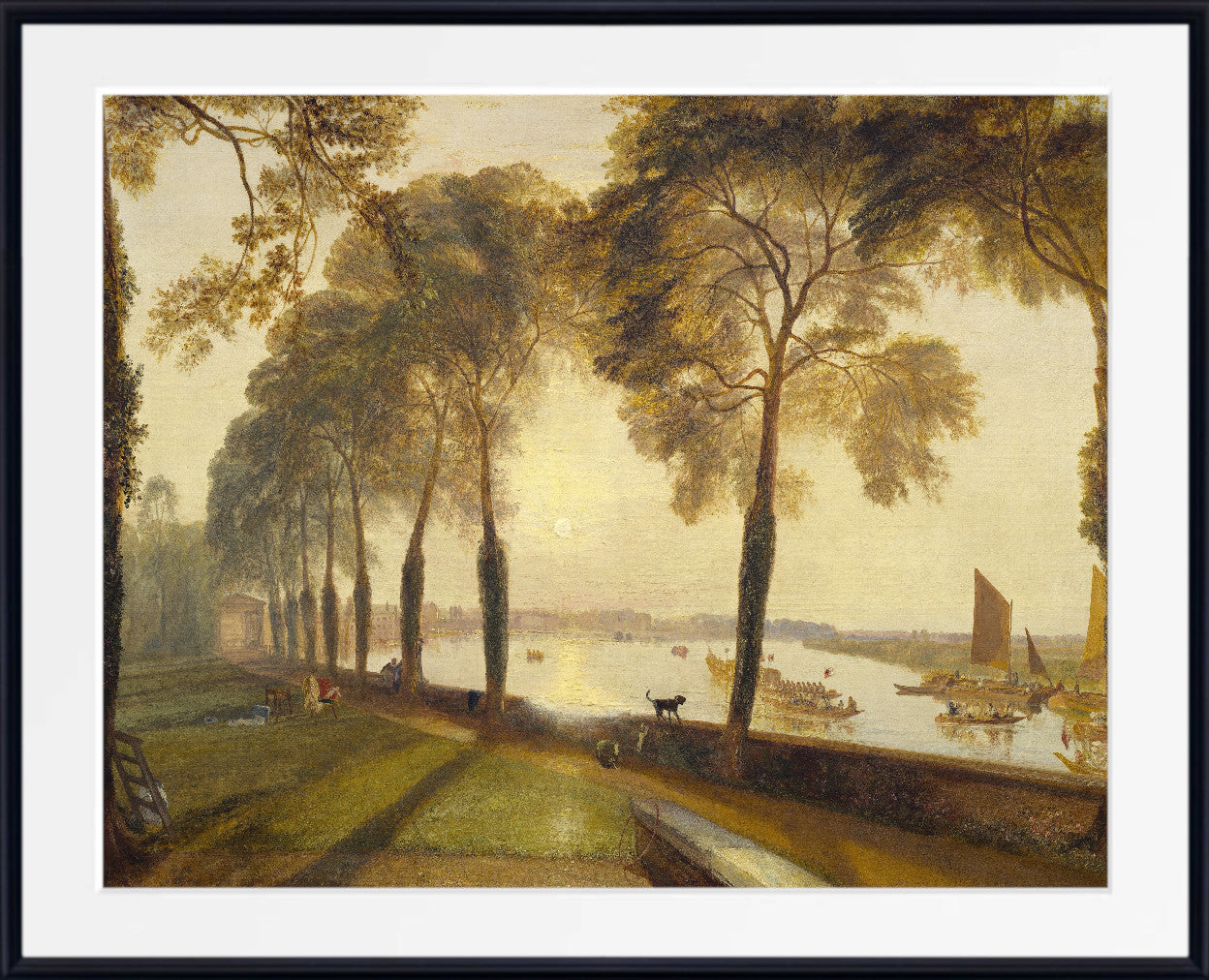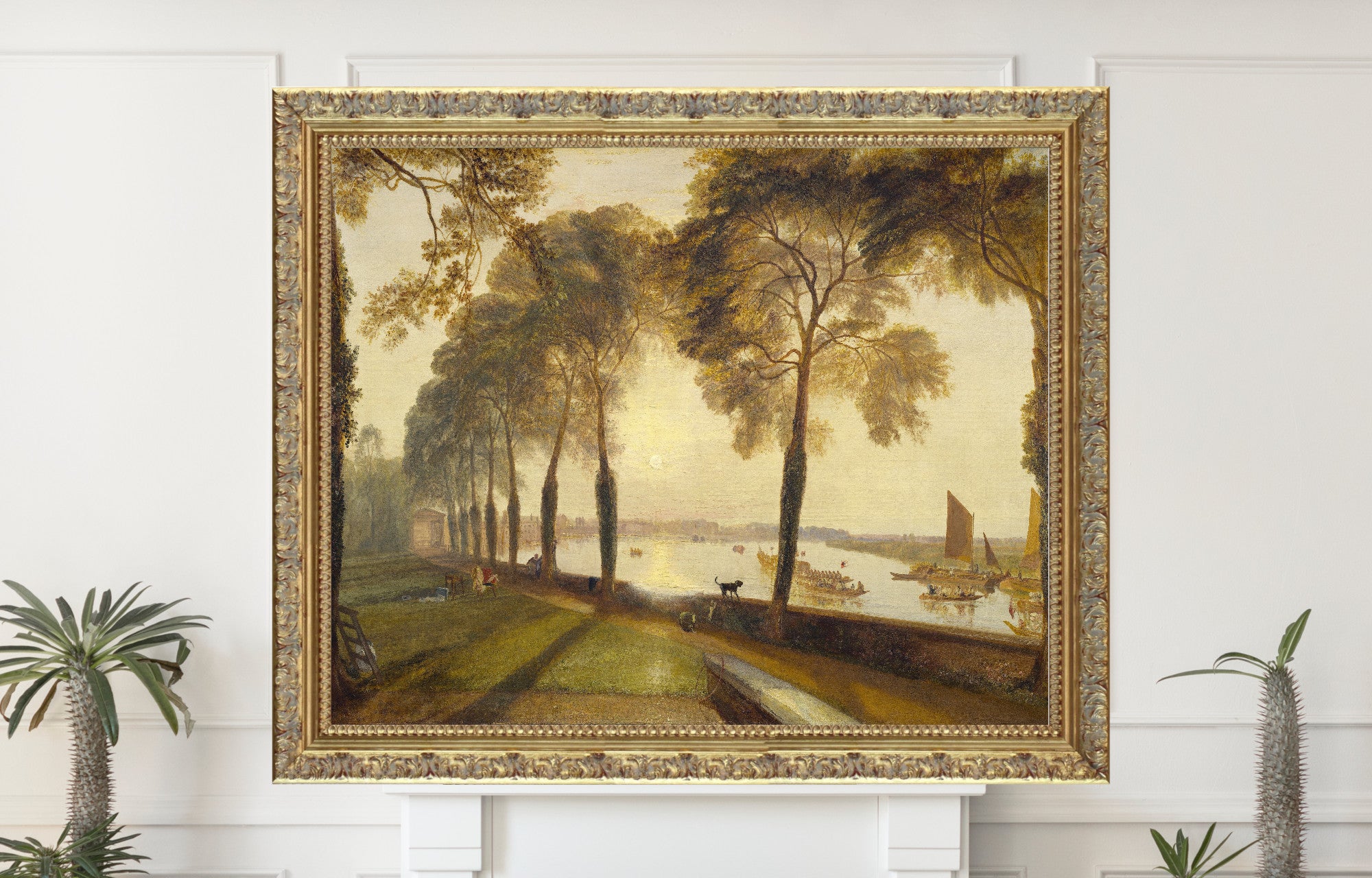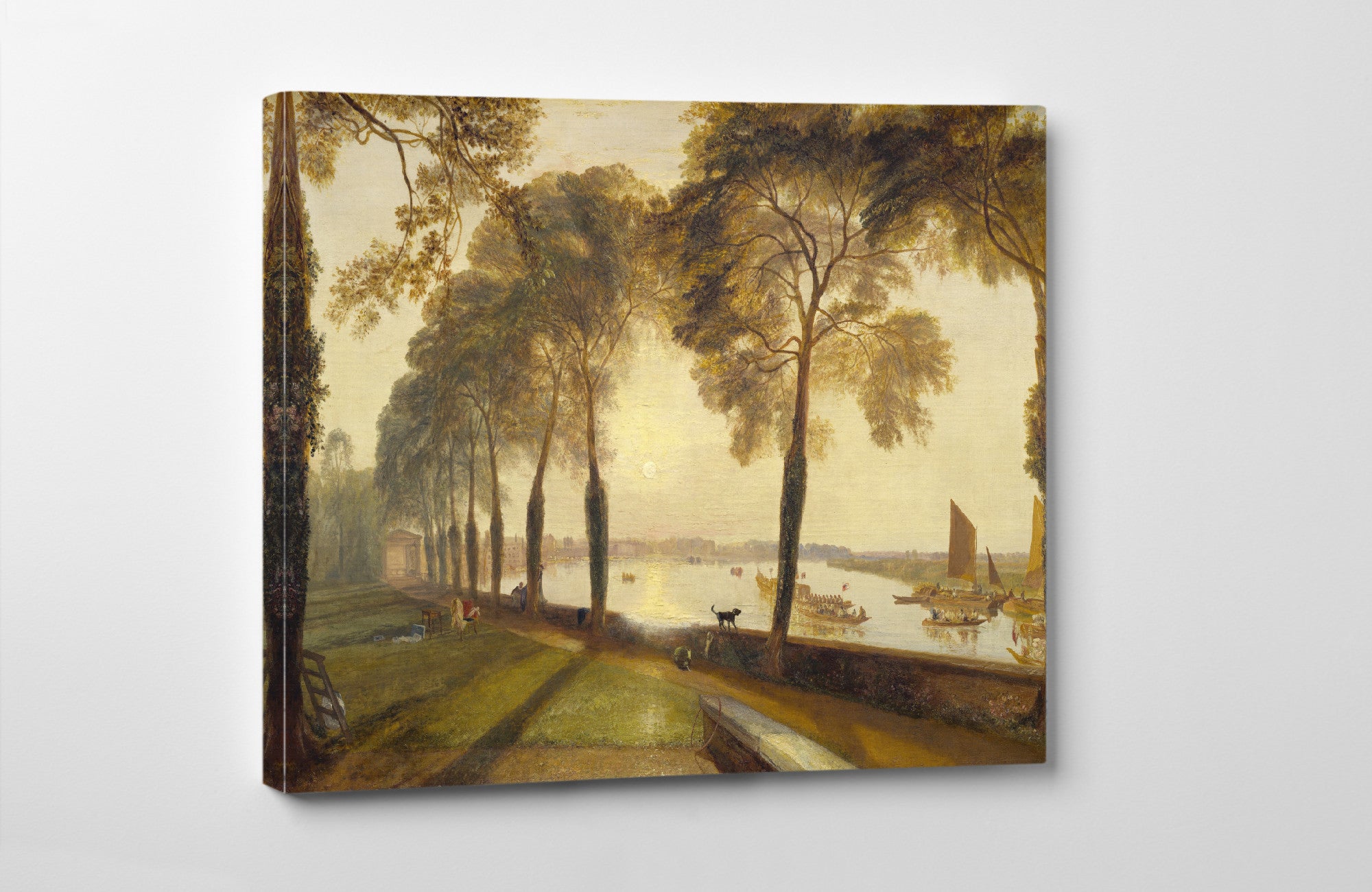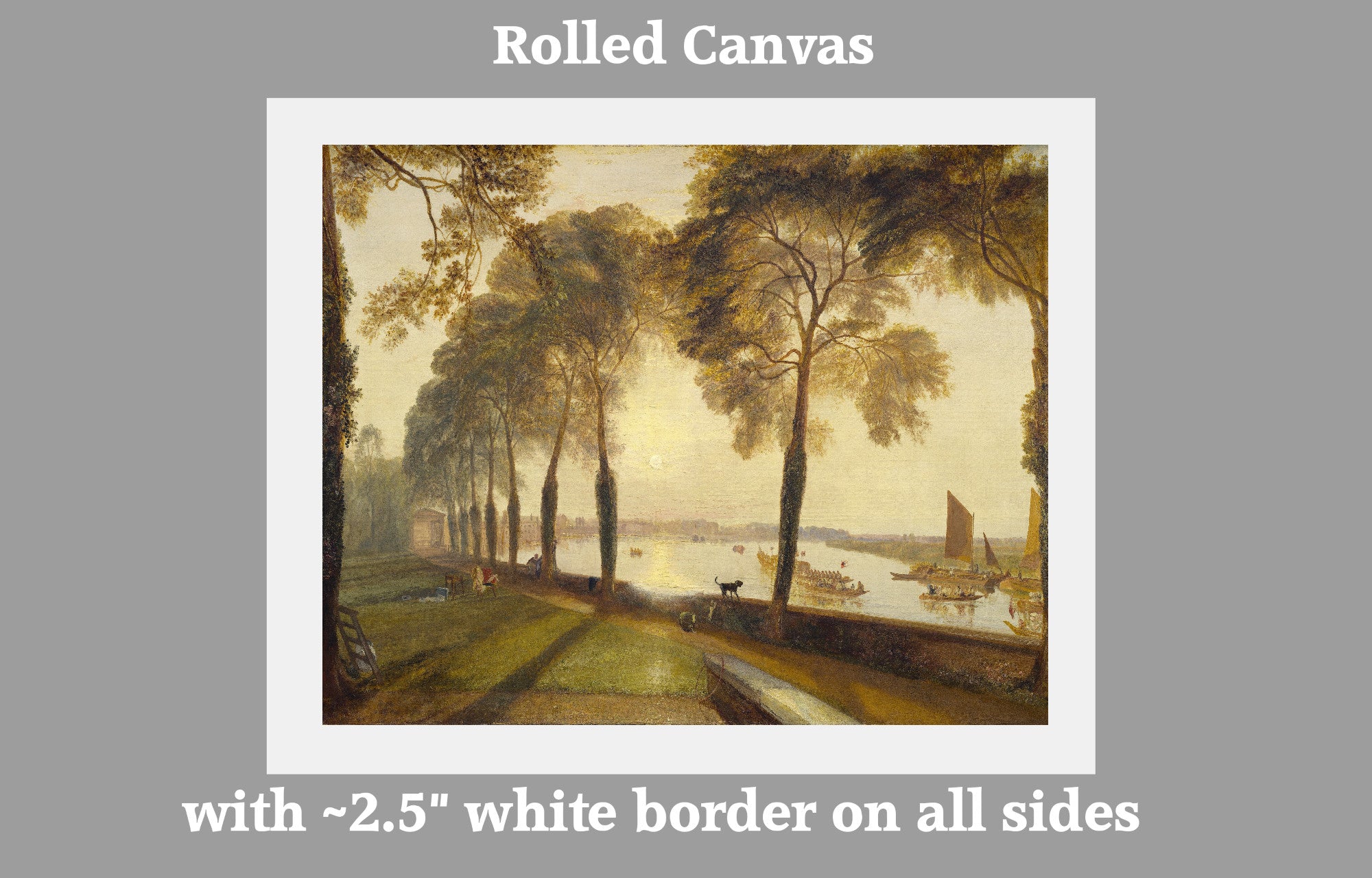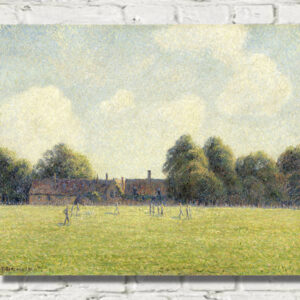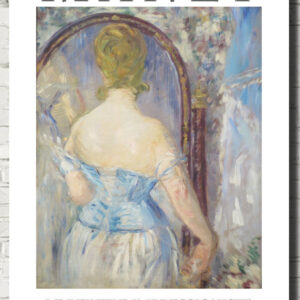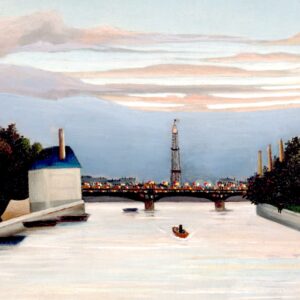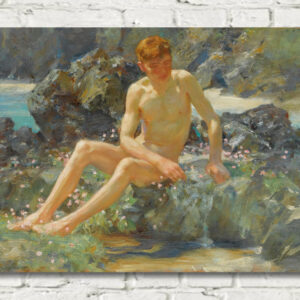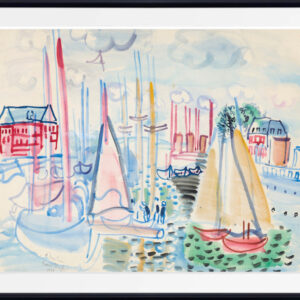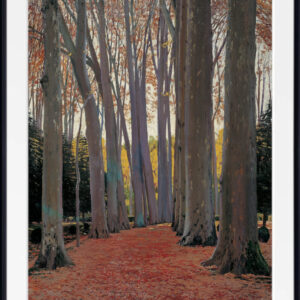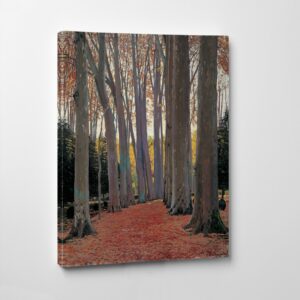Mortlake Terrace (1827) by William Turner
Mortlake Terrace (1827) by William Turner – Prints and Ready to Hang Canvas Panels
Mortlake Terrace: Capturing Twilight Tranquility
Turner’s Serene Sunset Vision
William Turner’s “Mortlake Terrace,” painted in 1827, offers a captivating view from a house, portraying a serene twilight. Two ivy-covered elm trees delicately frame the composition, casting enchanting shadows on the lawn. The painting captures the unique quality of light after Turner’s transformative experience in Venice, rendering the river with dreamlike shimmer.
Tranquil Details Amidst Twilight Shadows
In this masterpiece, Turner expertly weaves tranquility into the scene. Amidst the fading light, a gardener’s ladder, a hoop, a doll perched on a red chair, and an open portfolio left behind by observers of the Lord Mayor’s ceremonial barge, dot the landscape. These subtle human elements add depth to the painting, inviting viewers to contemplate the story behind the twilight scene.
Light and Atmosphere: Turner’s Artistic Alchemy
Turner’s mastery shines through the interplay of light and atmosphere. The painting showcases his adept use of impasto to depict the sun’s forceful rays spilling over the embankment wall, dissolving the stone’s substance. This technique, influenced by Turner’s experiences in Venice, creates a mesmerizing visual dialogue between stable structures and the ethereal play of light.
Turner’s “Mortlake Terrace” stands as a testament to his ability to capture the quietude of twilight, infusing his art with a profound sense of serenity. Explore this painting to immerse yourself in the timeless beauty of a tranquil evening, expertly preserved on canvas by one of art’s true luminaries.
Understanding William Turner’s Artistry
Joseph Mallord William Turner, a renowned English painter, left an indelible mark on the art world with his distinctive style and innovative techniques. His mastery of light, color, and atmosphere transformed landscapes into poetic expressions.
Innovative Techniques and Style
Turner’s innovative use of watercolors pushed the boundaries of traditional painting. He employed techniques like wet-on-wet and scraping to create luminous effects, giving his works an ethereal quality. His bold brushwork and vivid colors showcased nature’s dynamic beauty, capturing both its grandeur and subtleties.
Capturing Nature’s Essence
Turner had a unique ability to capture the essence of nature. His landscapes were not just literal representations but emotional experiences. Through skillful use of light and shadow, he infused his paintings with a sense of movement and life, making viewers feel the wind, hear the rustle of leaves, and sense the depth of the landscapes.
Symbolism and Narrative
Beyond the visual appeal, Turner’s paintings often carried symbolism and narratives. He conveyed powerful themes, such as the force of nature, the passage of time, and the human connection to the environment. His choice of subjects and compositions reflected his deep understanding of history, literature, and mythology, adding layers of meaning to his artworks.
Legacy and Influence
Turner’s innovative techniques and artistic vision had a profound influence on future generations of artists. His ability to convey emotion through landscapes paved the way for Impressionism and abstraction. Today, art enthusiasts and scholars continue to study Turner’s works, marveling at the timeless beauty and innovation that define his artistic legacy.
All prints are made using archival art stocks and UV pigment inks to give up to 200 years life. Prints are sold unframed and unmounted.

